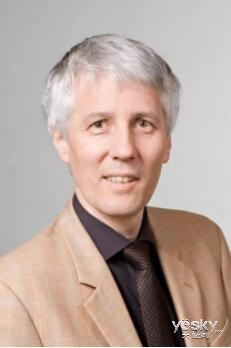 ������Ŀ��ŷ��������Ŀ��HBP����������
������Ŀ��ŷ��������Ŀ��HBP����������
The European Human Brain Project (HBP) and Neurorobotics
�����ˣ�Alois Knoll
�����ˣ��ŷɻ�
����ʱ�䣺7��9�� ����9��00
����ص㣺bet.365�����·������Ķ���¥
���ݼ��
Ϊ�����뿪չ�����о����ƶ��˹����ܵķ�չ��ŷ����2013�꽫�����Լƻ���������δ���콢������Ŀ������о������10��ŷԪ���ʽ�֧�֡�ŷ�����Լƻ���Ϊȫ������Ҫ�ġ���ǰ�ص���������о���Ŀ֮һ�� ��ˣ����Ƿdz��������뵽ŷ�����Լƻ�����ϯ��������ƽ̨��Ŀ�����ˡ��¹�Ľ��ڹ�ҵ��ѧ�������ѧ����Alois Knoll�������ã�����ŷ�����Լƻ������½�չ�������������˹����ܵ����¼��⡣
The HBP is one of two European Flagship projects dedicated to long-term basic research with a planned funding of 1 billion � over 10 years. The ultimate
goal is to gain profound insights into brain functions, develop new treatments for brain diseases and build entirely new computing technologies. HBP has three research areas �C Neuroscience, Medicine and Future Computing �C and will develop six ICT platforms, dedicated to Neuro?informatics, Brain Simulation, High
Performance Computing, Medical Informatics, Neuromorphic Computing and Neurorobotics. HBP is completely open, i.e., these platforms will be made
available to all interested research communities worldwide, enabling them to profit from each other. Our vision is that interactive supercomputing, driven by the needs of brain
simulation, will impact many industries. Devices and systems, modelled after the brain, are to overcome current limits on the energy-efficiency, reliability and programmability,
clearing the road for systems with brain-like intelligence. The Neurorobotics Platform will offer scientists and technology developers a software and hardware infrastructure allowing
them to connect pre-validated brain models to detailed simulations of robot bodies and environments and to use the resulting neurorobotic systems in silico experiments and
technology development. In this talk, I will give an overview of the HBP within the context of European ICT research, outline the goals of the Neurorobotics subproject, and sketch the computation platforms and the soft robot technologies that will be used as the embodiment of the robot systems which are to be controlled by simulated brain models. An outlook on
the work which is planned for the next two years will conclude my talk.
�����˼��:Alois Knoll received the M.Sc. degree in Electrical/Communications Engineering from the University of Stuttgart, in 1985 and his PhD in Computer Science from TU Berlin in 1988. In 1993, he joined the University of Bielefeld, where he was a full professor until 2001. Between 2001 and 2004 he was a member of the board of directors of the Fraunhofer-Institute for Autonomous Intelligent Systems. Since 2001, he has been a professor of Computer Science at the Department of Informatics of the Technische Universit?t M��nchen
TUM. His research interests include cognitive, medical and sensor-based robotics, multi-agent systems, data fusion, adaptive systems, multimedia information retrieval, model-driven development of embedded systems with applications to automotive software and electric transportation, as well as simulation systems for robotics and traffic. He initiated and was the program chairman of the First IEEE/RAS Conference on Humanoid Robots (Humanoids2000), and served on several other committees as well as editorial boards of international
journals. He is the coordinator of the EU-Project ECHORD++, a large initiative for bringing together the robotics industry, research institutes and universities. In 2009, he co-founded
fortiss, the Munich Software and Systems Institute, which is a large-scale joint operation between TUM and Fraunhofer. Prof. Knoll is a Fellow of the University of Tokyo, Japan.
